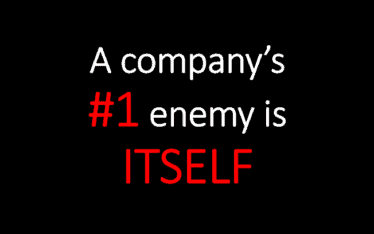With the influence of the internet, new technology and the rise of digital marketing, a number of retailers are struggling to keep up.
What will be next? Will it be virtual stores based on QR that will disrupt traditional bricks and mortar?
Tesco
After research showed that South Koreas admire efficiency and despise spending time grocery shopping, Tesco Homeplus opened the world’s first virtual store in the Seoul subway.
In an effort to accommodate the culture and boost revenues in Korea, Tesco Homeplus installed virtual “aisles” – over 500 of the most popular products – at train stations that let people buy groceries via their smartphones while they waited for the train. The “aisles” featured images of food and were designed to look like grocery store shelves. Each item had a corresponding QR code that could be scanned in the Tesco Homeplus’ smartphone app to add a product to the commuter’s shopping cart and get delivered right to their doorstep.
The beauty of the idea is that busy commuters can scan their groceries on their way to work in the morning and, as long as their order is placed before 13.00, their items will be delivered home that same evening, creating even greater speed and convenience in the whole shopping experience.
The displays, which include a range of different daily items from milk and apples to pet food and stationery, are placed on the pillars and the screen doors at the subway station.
Tesco Homeplus’ Smartphone App, which customers need in order to shop at the virtual store, is now the number 1 shopping App in Korea, with over 900,000 downloads since it launched in April last year (Tesco – 7 February, 2012)
On the heels of the virtual aisles’ success, the company is expanding to more than 20 bus stops in South Korea, giving busy commuters the opportunity to do their grocery shopping on the fly.
Ocado
UK-based Ocado, a pure-play online grocery retailer, has taken the Tesco innovation one step further. It’s opened physical stores – actual “high street” locations – where consumers can roam a branded space, browse products, scan barcodes, and complete their shopping task by ordering online from a physical location. Like Homeplus, to access the service, consumers have to download a proprietary shopping app, called Ocado “On The Go.”
Yebhi
Online fashion and lifestyle portal Yebhi.com has launched virtual stores across 30 Cafe Coffee Day (CCD) outlets in Delhi and Bangalore. These virtual store will feature pictures of merchandise from Yebhi.com website with a QR or NFC code. The quick response (QR) code embedded on the wall will direct them to the merchant site where consumers can pick the product of their choice. The merchandise can be bought through a credit, debit or even the popular cash-on-delivery mode.
What is the lesson for traditional bricks and mortar
Don’t count on bringing customers to your brand. Bring your brand to your customers. Place your offerings squarely in the context of your customers’ lives.
Short URL & title:
Will virtual stores disrupt traditional bricks and mortar — http://www.torbenrick.eu/t/r/tvc
Share it:
If you enjoyed this article, please take 5 seconds to share it on your social network. Thanks!








About The Author
Torben Rick
Experienced senior executive, both at a strategic and operational level, with strong track record in developing, driving and managing business improvement, development and change management. International experience from management positions in Denmark, Germany, Switzerland and United Kingdom